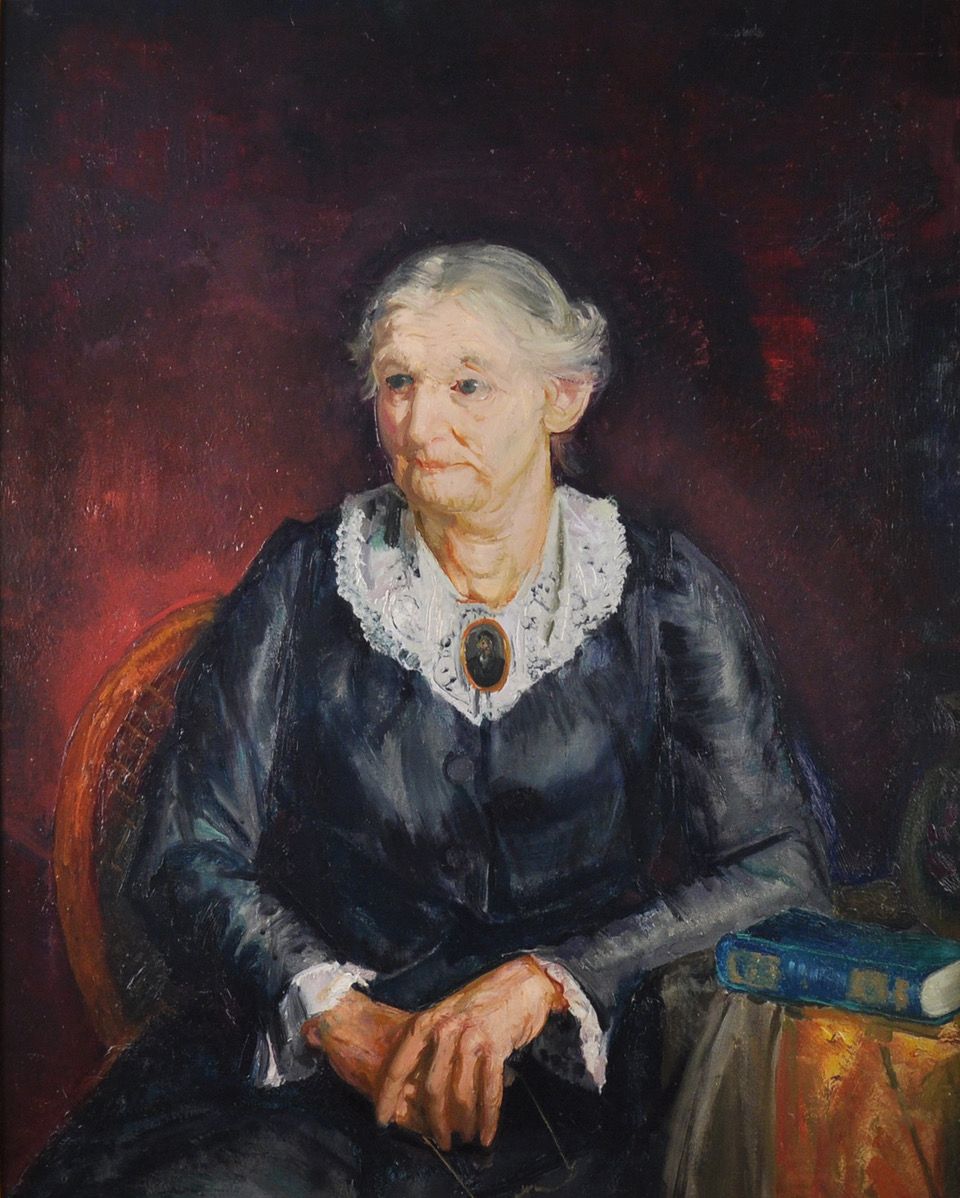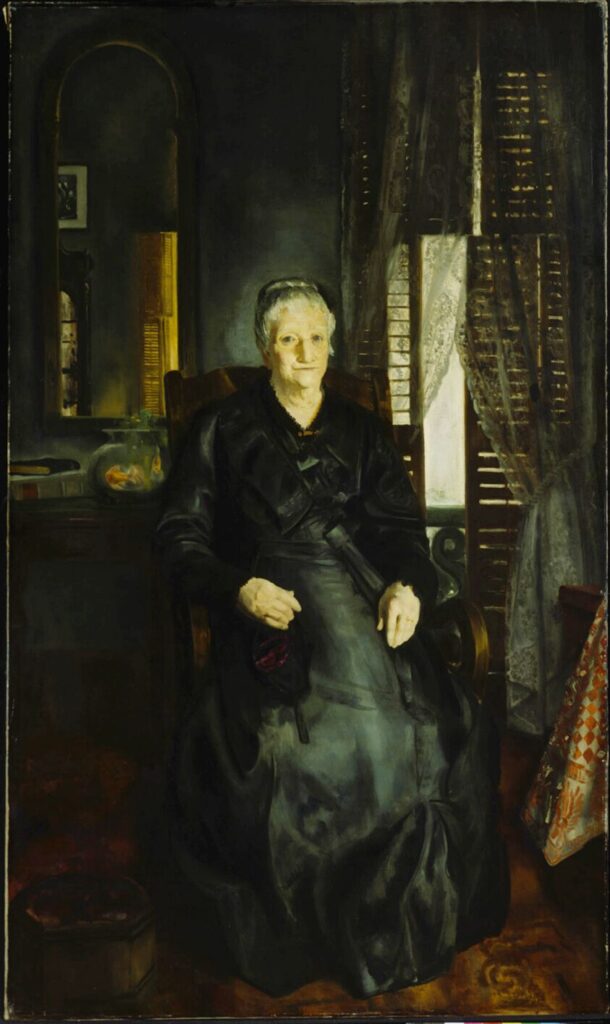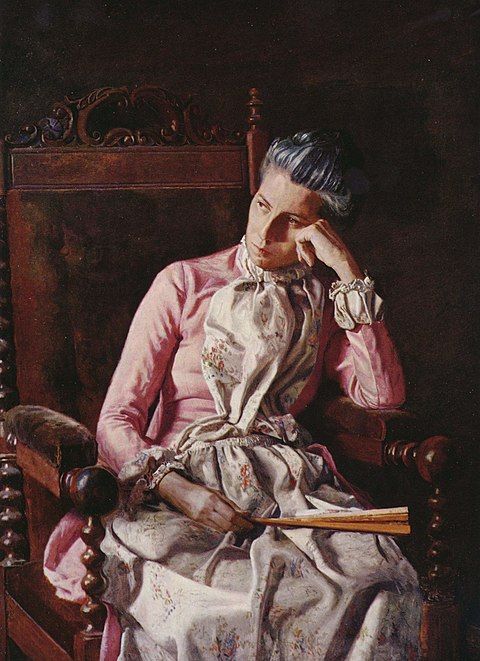George Wesley Bellows (1882–1925)
Old Lady with Blue Book, 1919
Oil on canvas
McMullen Museum of Art, Boston College, Gift of Alexandria & Michael N. Altman P’22, ’24, ’26, 2019.4

John McCoy
Assistant Director, McMullen Museum

George Bellows is most famous for his paintings of urban New York, particularly scenes of boxing and nightlife. A student of Robert Henri (1865–1929), Bellows is associated with the so-called Ashcan School, a group composed of Henri and his followers committed to depicting realistic scenes of poor neighborhoods and their inhabitants. Although Bellows shared some of the subject matter and broad painterly style of his fellow painters in the Ashcan group, he was less interested in painting as social commentary than he was in the freedom of artists to paint whatever they wanted. Bellows’s work flitted from city scenes to those of high society to seascapes; and from periodical illustration to portraiture.
His title for Old Lady with Blue Book does not provide the name of the sitter, but she closely resembles Bellows’s mother as he depicted her in other works (see comparison). That the McMullen painting was in Bellows’s estate at his death suggests it was of personal significance. Stylistically, the loose brushwork shows the strong influence of Henri, while the dark, restrained palette and matter-of-fact realism recalls the work of Thomas Eakins (1844–1916), whom Bellows held in high esteem (see comparison).
The black dress with white lace collar and cuffs indicates the wearer is in either “second mourning” or “late mourning.” Complex rules dictated mourning attire in the late nineteenth and early twentieth century and changed with the passage of time from the death of a loved one. Some widows, especially the elderly, wore late mourning clothes the rest of their lives. The other indication that this woman is a widow is her brooch bearing the likeness of a man. While the early Victorian tradition was for mourning brooches to feature locks of hair or cameos of mourning figures, by the late nineteenth century photographs of the deceased, sometimes colored, were popular. By the early twentieth century, these markers of widowhood would have been recognized by viewers even if they were fading from practice. The blue book is a sewn cloth hardcover with gold blocking (embossed printing) on its spine. The electric blue is probably due to aniline, a petroleum dye discovered in 1856 that produces dazzling colors, including a bright indigo. Such colors were common in cloth bindings of the 1860s, but soon went out of fashion as later covers incorporated more overall printing and muted colors. Gold blocking was also popular in the years following the 1849 gold rush, but fell out of style after the Civil War drove up the cost. Taken together, these clues point to the book being an antique, and possibly a treasure for its owner.


